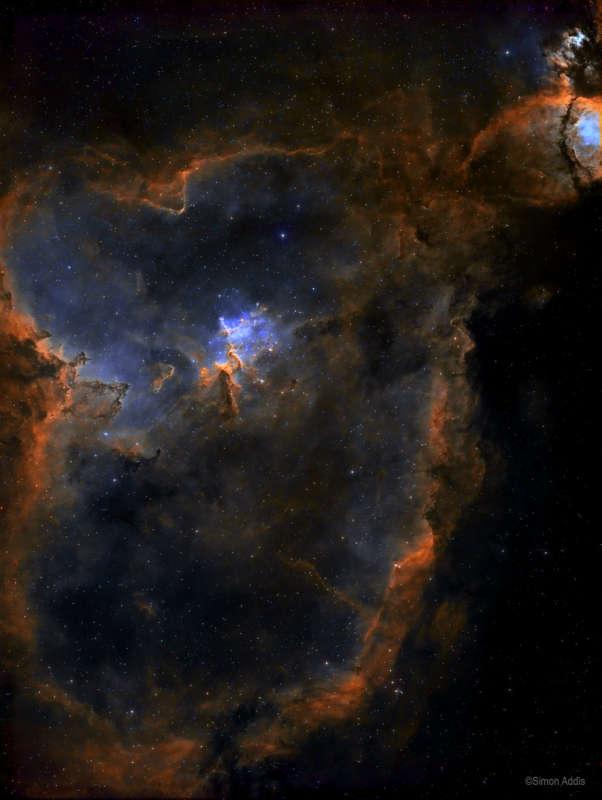
|
Credit & Copyright:
Image Copyright: Simon Addis
Explanation:
What's that inside the Heart Nebula?
First, the large emission nebula dubbed
IC 1805 looks, in whole, like a human heart.
The nebula glows brightly in red light
emitted by its most prominent element:
hydrogen.
The red glow and the larger shape are all created by a
small group of stars near the
nebula's center.
In the center of the Heart Nebula are young stars from the open star cluster
Melotte 15 that are eroding away several picturesque
dust pillars with their energetic light and winds.
The open cluster of stars contains a few
bright stars nearly 50 times the mass of our Sun,
many dim stars only a fraction of the mass of our Sun, and an
absent microquasar
that was expelled millions of years ago.
The Heart Nebula is located about 7,500 light years away toward the
constellation
of Cassiopeia.
At the top right is the companion
Fishhead Nebula.
Image Copyright: Simon Addis
|
January February March April May June July August September October November December |
| ||||||||||||||||||||||||||||||||||||||||||||||||
NASA Web Site Statements, Warnings, and Disclaimers
NASA Official: Jay Norris. Specific rights apply.
A service of: LHEA at NASA / GSFC
& Michigan Tech. U.
Based on Astronomy Picture
Of the Day
Publications with keywords: Heart Nebula - emission nebula - open cluster
Publications with words: Heart Nebula - emission nebula - open cluster
See also:
- APOD: 2025 September 19 Á The NGC 6914 Complex
- APOD: 2025 September 10 Á The Great Lacerta Nebula
- APOD: 2025 August 7 Á The Double Cluster in Perseus
- APOD: 2025 July 21 Á Cats Paw Nebula from Webb Space Telescope
- APOD: 2025 July 16 Á The Rosette Nebula from DECam
- APOD: 2025 July 5 Á Ou4: The Giant Squid Nebula
- APOD: 2025 June 26 Á The Seagull Nebula
